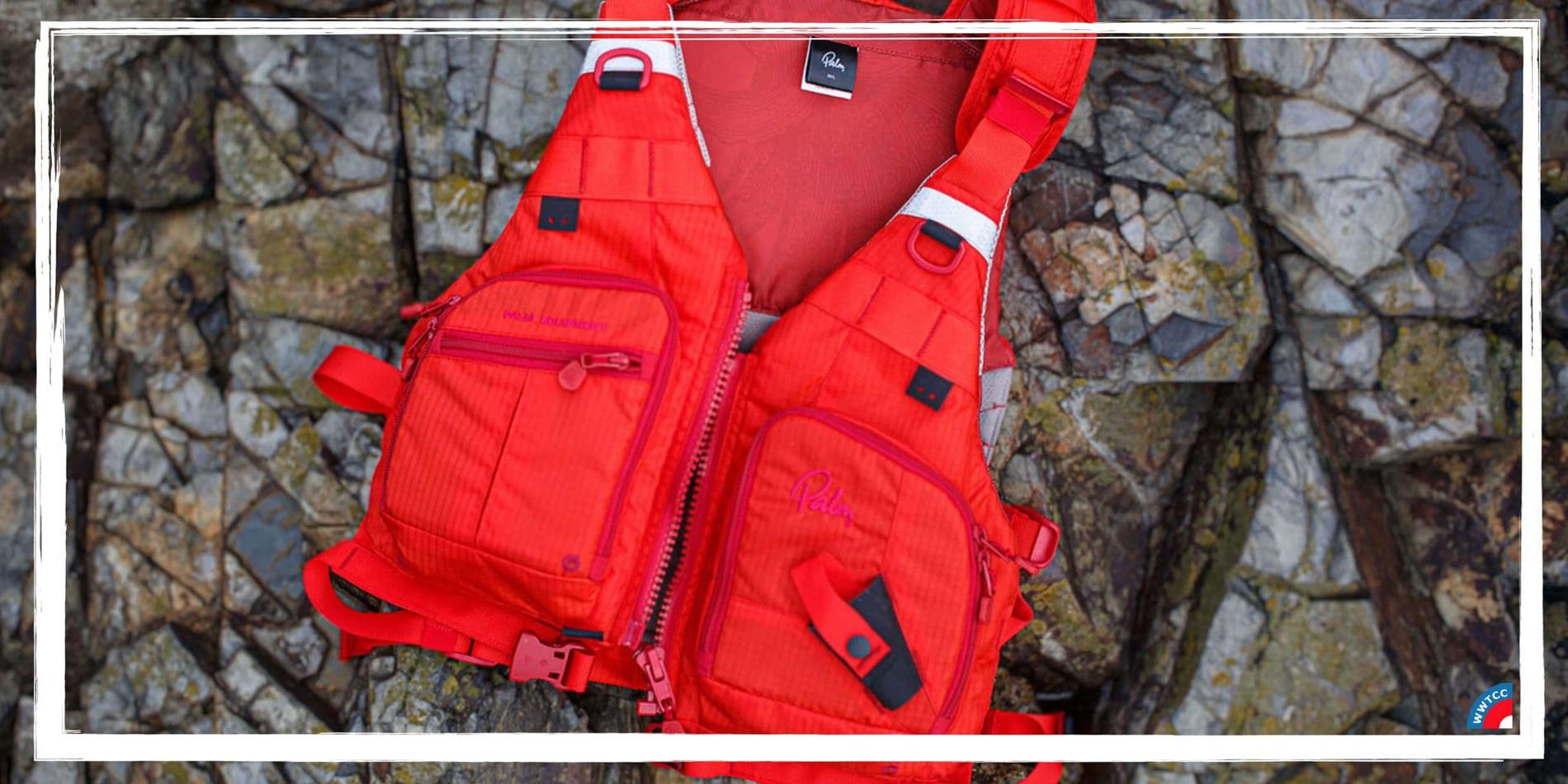
Your buoyancy aid is an essential piece of safety equipment for your time on the water. In this blog we’ll highlight the differences between a buoyancy aid and lifejacket, the types of buoyancy aids, explain how buoyancy is measured, as well as how you should fit and look after yours.
What is the difference between a personal floatation device (PFD), buoyancy aid (BA) or a Lifejacket?
- PFDs and BAs are the same thing. We will use PFD.
- PFDs provide additional floatation to a conscious swimmer in sheltered water with help close at hand
- They need to be secure when worn, to provide positive support in the water and to allow users to swim or actively assist themselves or others.
- PFDs may require action by the wearer to keep their face clear of the water
- Lifejackets typically provide more floatation, may be bulkier and will turn an unconscious wearer onto their back keeping their airway clear.
What are the main types of PFDs?
PFDs can either be automatic or require manual intervention from the wearer when they enter the water.
Automatic PFDs rely on inherently buoyant material such as foam or automatic inflation. This means when correctly worn they will provide a specific amount of buoyancy without the user needing to do anything.
Those that require the user intervention either need the wearer to inflate them orally or by operating a mechanism.
As kayaking and canoeing can lead to unexpectedly being in the water, inherently buoyant PFD’s made using a variety of different types of foam, that can be comfortably worn and allow for plenty of freedom of movement both for paddling and swimming are the best option.
How much buoyancy do I need?
Since 2008, ISO certification is the standard to which all buoyancy aids or PFDs must be tested. More recently PFDs sold in the UK may also feature the UKCA standard mark.
ISO standards use Newtons to measure the buoyancy of PFD’s. A Newton is a measured unit of force. 10 Newtons are approximately equal to 1 kg (2.2 lbs) of buoyancy.
When you’re choosing your new kayaking or canoeing PFD make sure it meets the EN ISO12402-5 or EN ISO1402-6 (special purposes standard) standards. This means it will provide a minimum of 50N of buoyancy for an adult of 70kg or more. For those less than 70kg the following scale applies:
Wearer’s Weight (KG) | 30-40 | 40-50 | 50-60 | 60-70 | 70 |
Minimum buoyancy (N) | 40 | 40 | 40 | 45 | 50 |
- Recreational– These are the simplest and often the lowest profile options, and are made from lightweight fabrics.
- Touring and sea – These PFDs tend to be a bit more buoyant and may be made with more durable fabrics and incorporate additional safety features such as reflective elements
- White water– Among the most buoyant in the EN ISO 12402-5/6 category. Feature more durable fabrics, stronger components and construction techniques, as well as Quick Release mechanisms for rescue situations
In addition to making sure your new PFD meets the ISO standard you should also consider the type of paddling you will use it for and the conditions you’ll use it in. Most manufacturers design a range of options to cater for the following types of paddling
As well as the buoyancy, the ISO testing also dictates every other aspect of the PFD, material, adjustment systems, reflective areas, stitching, load bearing areas, conspicuousness, the expected length of service, pocket placement, labelling everything. All modern PFDs are tested to destruction to make sure you get a product that is fit for purpose.
How to Fit your PFD
Your PFD will only work if it fits correctly; remaining comfortable while you’re paddling and even more importantly if you end up in the water so that you can successfully swim or assist others. This means the fit, typically based on your chest size, is more important than choosing a PFD based on your weight. You want to be able to comfortably paddle or swim freely without the PFD riding up
- Start by loosening all the straps and buckles,
- Put it on and secure any buckles, zips, or clips
- Now you can start to tighten the straps starting with the waist and working up.
Looking after your PFD
Having invested in such a vital piece of safety equipment it’s important to look after it to ensure you get a reasonable lifespan out of it and it continues to work as intended.
Here are some simple things you can do every time you use your PFD that will help
- Rinse in clean fresh water to help reduce corrosion
- Drip dry out of direct sunlight rather than forced drying in drying rooms or heaters which degrades the foam
- Once dry, hang it by the shoulder straps on a hanger. Avoid compressing it, which can damage the foam
A PFD has a finite lifespan regardless of how little or carefully look after, so it’s important to regularly check the condition of your PFD to make sure zips, buckles and straps are all in good working order, that there are no tears or rips in the fabric, that any pockets open and close and are free of debris and mould and that the foam still fills the fabric shell.
If you find an issue you might be able to get it repaired or it may be time to retire your PFD.
You can also ‘Float Test’ your PFD it to check it still provides enough buoyancy. For those using their PFD daily you should start annual float testing after 2 years of use, while medium to light users should check annually after 3 years.